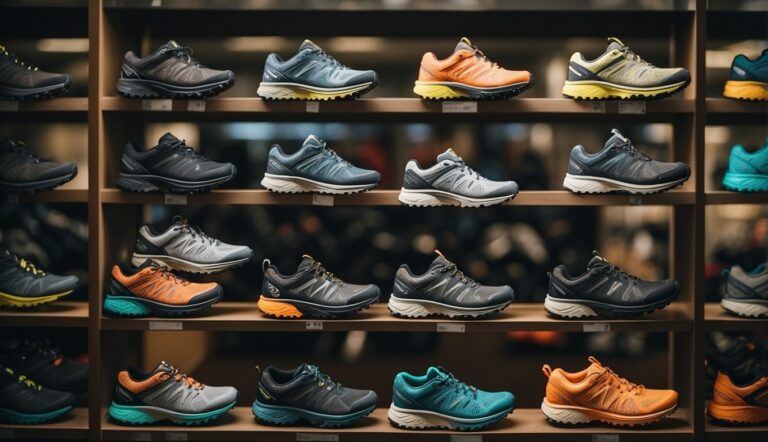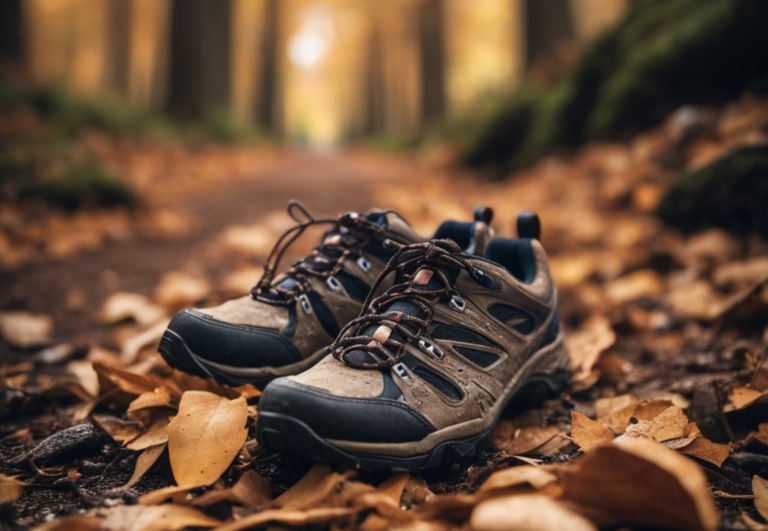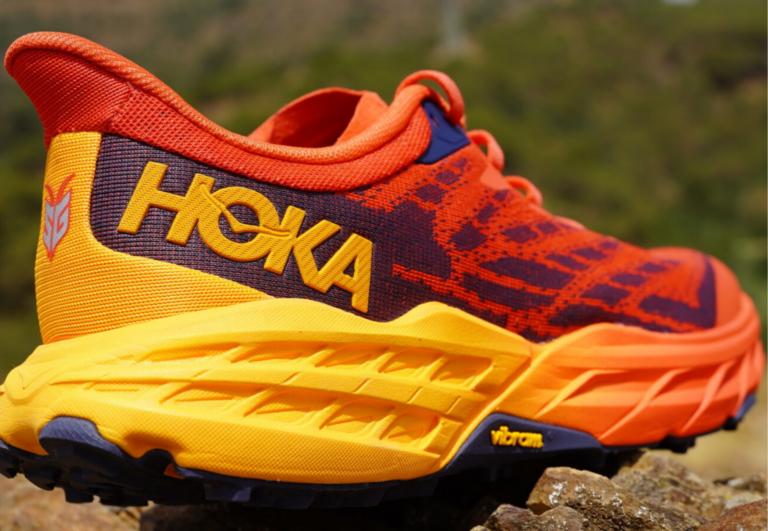Is There a Difference in Men’s and Women’s Trail Running Shoes? Unveiling the Facts
As a UESCA certified running coach, I’ve noticed a growing interest in understanding the distinctions between men’s and women’s trail running shoes. It’s essential for runners to recognize that trail running shoes differ in design to cater to the rugged and uneven terrain encountered off-road. These shoes are built with specialized features to ensure stability, grip, and foot protection, which are critical for the unpredictable nature of trails.
When it comes to gender-specific designs, men’s and women’s trail running shoes do show differences, primarily due to anatomical variations. Men’s trail running shoes are typically wider, with a design that accommodates a broader forefoot and heel.
On the other hand, women’s trail running shoes are often narrower, with a lighter build and a design that supports the biomechanics of a woman’s stride. This ensures that each runner gets the support and comfort needed for their unique foot shape and running mechanics on the trails.
Why Men’s and Women’s Trail Shoe Designs Are Different
When selecting trail running shoes, it’s crucial to understand that men’s and women’s shoes often vary to cater to different biomechanical trends. These differences can impact fit and function, and acknowledging them helps runners choose gear that complements their natural running style and body mechanics.
Q-Angle and Pronation
The Quadricipital (Q) Angle is the angle at which the femur meets the tibia at the knee, which typically is larger in women due to a broader pelvis. This difference can influence pronation — the inward roll of the foot upon landing.
- Women: Generally have a larger Q-angle which can lead to overpronation.
- Men: Typically have a smaller Q-angle which can influence pronation differently.
Shoe designers take this into account, often integrating support features in women’s shoes that help stabilize the foot, potentially reducing the risk of overpronation-related injuries.
Lasts and Fit Specifics
A shoe last is the mold around which a shoe is designed, affecting the overall fit and feel:
- Men’s Lasts: Tend to be wider with a D-width norm, matching a man’s generally broader forefoot.
- Women’s Lasts: Are usually B-width as women’s feet are, on average, narrower.
The last affects the shoe’s volume, with an emphasis on matching the unique contours of men’s and women’s foot shapes for optimal comfort and support. Correctly fitting trail running shoes are vital in preventing blisters and providing proper traction on varying terrains.
It’s important for runners to choose a shoe that aligns closely with their foot shape and biomechanical needs.
Design Variations in Trail Shoes
Trail running shoes are specifically crafted to meet the demands of varied terrain, focusing on stability, comfort, and durability. Let’s examine the differences that impact the performance of a trail shoe.
Midsole and Cushioning
The midsole of a trail running shoe is a fundamental element as it provides cushioning and shock absorption. Featuring materials like EVA or polyurethane foam, midsoles balance cushioning with responsiveness.
In my experience, a thicker midsole offers increased protection against rocks and roots, while a thinner one allows for better ground feel.
- EVA Foam: Lightweight, provides adequate cushioning.
- Polyurethane foam: More dense and durable than EVA.
Outsole and Traction
For outsole and traction, a quality trail shoe uses a higher-density rubber compound that provides grip on various surfaces while being durable enough to withstand the rigors of trails. The lug pattern—those protrusions on the bottom of the shoe—varies in shape and depth, with deeper lugs typically offering better traction in muddy conditions.
- Vibram Outsoles: Renowned for durability and excellent grip.
- Lug Depth: Deep lugs for muddy terrain, shallower for hard-packed trails.
Upper Construction
The upper must balance breathability with the need to protect against trail debris. Materials like Gore-Tex offer water resistance without sacrificing too much breathability. Some uppers may include Kevlar-coated materials, which significantly enhance durability against sharp rocks and thorny underbrush.
- Materials: Mesh for breathability, Kevlar-coated for durability.
- Gore-Tex: Provides water resistance while maintaining some air flow.
Performance Factors
When considering men’s and women’s trail running shoes, several performance factors such as weight and responsiveness, stability and support, as well as comfort and fit play a crucial role. These elements are vital for enhancing running efficiency and safety on uneven trail surfaces.
Weight and Responsiveness
For trail running shoes, a balance between lightweight construction and responsive cushioning is key. Lighter shoes enable quicker foot turnover, aiding in speed and agility. Men’s shoes are often built to accommodate heavier body weights, hence may be slightly heavier than women’s.
Women’s shoes, on the other hand, prioritize energy return, usually leveraging lighter, responsive materials that provide a springy feel, essential for maintaining pacing over long distances on rugged terrain.
Stability and Support
Stability is paramount in trail running shoes to navigate uneven paths and reduce the risk of ankle rolls. Men’s trail running shoes typically offer wider bases and more robust support to respond to higher weight and different pressure patterns.
In contrast, women’s shoes provide targeted stability suited to a typically narrower heel and a wider forefoot, reflecting the anatomical differences to ensure that support is provided where it’s most needed.
Comfort and Fit
The comfort and fit of a trail running shoe impact the runner’s endurance and performance on the trails. Women’s trail running shoes are designed with a narrower heel and a roomier toe box to match the shape of a woman’s foot, delivering a snug, no-slip fit. Men’s trail shoes are generally wider with additional volume.
Both men’s and women’s shoes need to secure the foot to prevent in-shoe slipping, which can lead to blisters and discomfort while tackling steep or rugged terrain. Properly fitted shoes enhance overall comfort, minimize distractions, and allow runners to focus on the trail ahead.
Brand-Specific Technologies and Models

When evaluating trail running shoes, it’s important to look at the distinct technologies and models developed by leading brands. These advancements cater to different terrains and runner needs, enhancing performance and fit.
Salomon Advanced Designs
Salomon’s S/LAB Ultra 3 trail shoe is a prime example of innovation designed for endurance. My experience with this shoe has shown its balanced cushioning and Contagrip® outsole provide exceptional grip and durability on varied terrain. It’s often my go-to recommendation for long-distance runners who demand a shoe that can withstand tough conditions.
Innovations by Altra
The Altra Lone Peak 7 is recognized for its FootShape™ toe box and Balanced Cushioning™ platform, which work together to promote a natural foot position and low-impact landing.
As a runner and a coach, I have found that these features offer a comfortable and stable ride on rugged trails, making the Lone Peak a solid choice for runners focused on foot health and trail responsiveness.
Nike and Hoka Innovations
Nike has continually contributed to the trail-running scene with durable traction and responsive cushioning.
Meanwhile, the Hoka Speedgoat 5 stands out with its chunky Megagrip Vibram® lugs and plush cushioning, which I’ve seen provide runners with remarkable support and grip during challenging trail excursions. This shoe’s design demonstrates Hoka’s dedication to both comfort and technical performance on rough terrain.
Choosing the Right Trail Running Shoes
I understand that choosing the right trail running shoes is crucial for trail runners looking for both performance and comfort on various terrains. The decision largely depends on the terrain you encounter and your personal preferences, including how much you’re willing to invest.
Terrain and Usage
When I advise runners, I emphasize that trail runners should match their shoes to the specific terrain they will frequent. For instance:
Muddy or Soft Trails:
- Look for shoes with large lugs for better grip.
Rocky or Technical Trails:
- Durable shoes with a protective rock plate and sticky rubber outsoles enhance safety and performance.
Mixed Terrain:
- Versatile shoes that combine cushioning for hard surfaces with traction for loose dirt can be beneficial.
Personal Preference and Price Point
Runners should factor in their personal preference when selecting trail shoes. Women’s shoes can be designed with a different fit than men’s shoes, accounting for differences in foot shape and biomechanics. Comfort, fit, and ride are subjective and crucial in a shoe’s performance:
Fit and Comfort:
- Shoes should be snug yet comfortable without causing hotspots or cramping.
Cushioning:
- Some prefer minimal cushioning for better ground feel, while others look for more substantial cushioning for longer runs.
Lastly, price can be an indicator of quality but isn’t always. Look for the best trail running shoes within your budget, and don’t hesitate to invest a bit more for durability and performance benefits on challenging trails. While high prices don’t guarantee the perfect fit, they often reflect the quality of materials and technology used.






